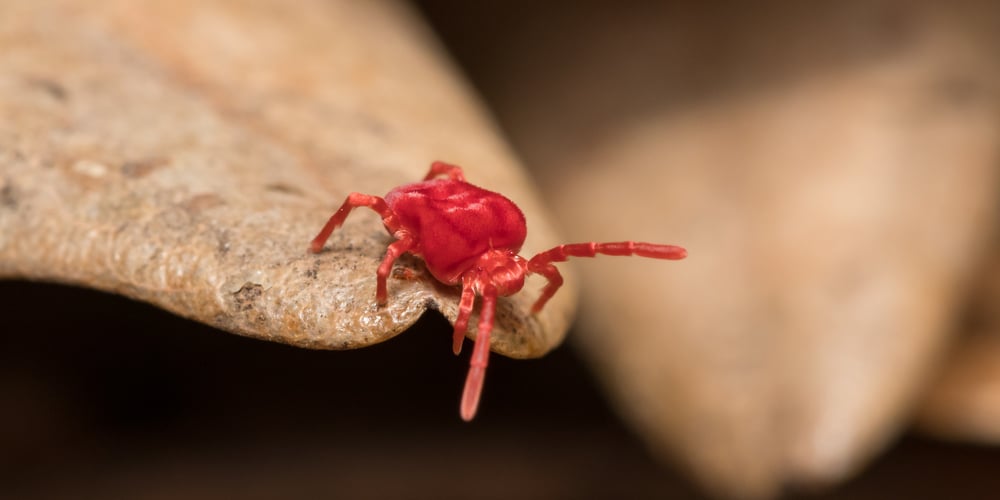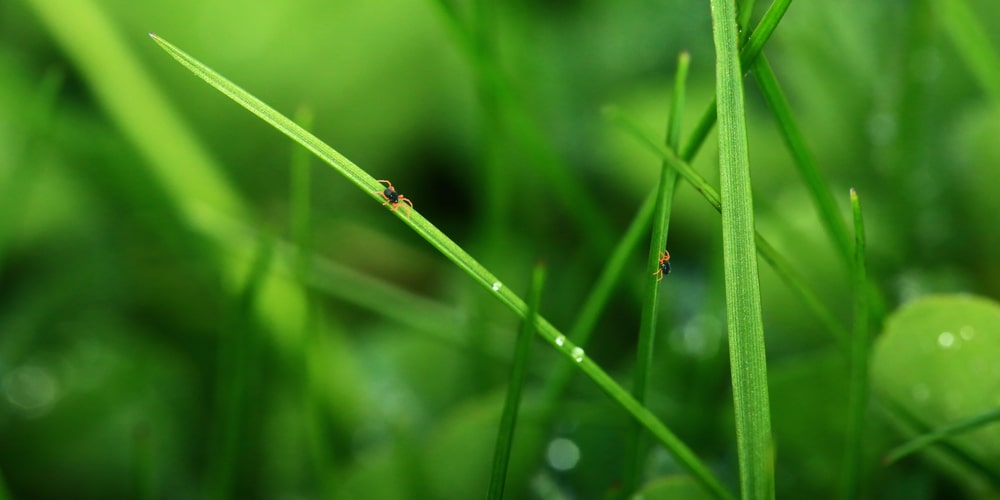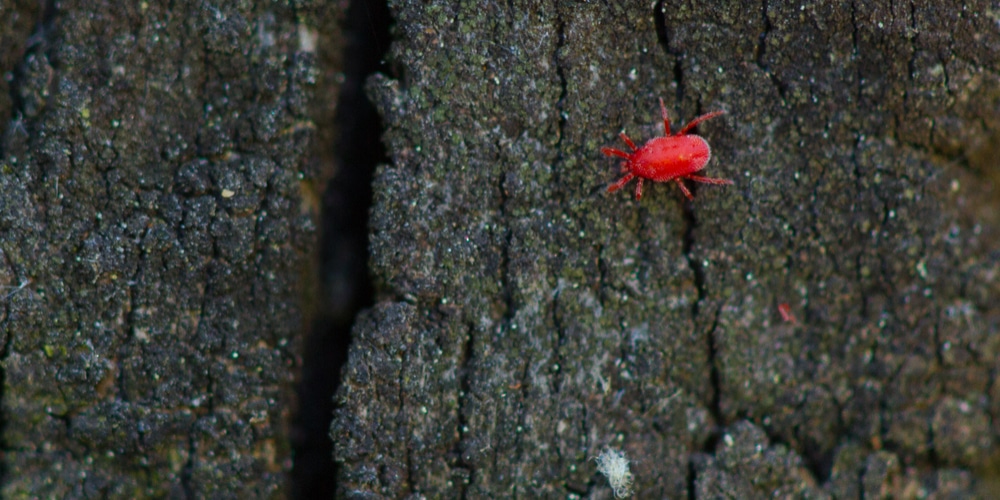Clover mites are a common pest that can ruin the look of your lawn. They are sap-sucking insects that affect various plants, house plants, and grasses. The trick to getting rid of these little red bugs is knowing how they live and where they hide in your yard.
Although clover mites may look like tiny insects, they’re actually arachnids, similar to spiders and ticks. They inject toxins into your lawn as they feed, which can kill plants and grass. Let’s look at how to get rid of clover mites.
What are clover mites?
Clover mites are tiny, around 0.08 inches long, which is small enough to go unnoticed. In most cases, clover mites aren’t a problem unless they begin to multiply and an infestation occurs.
They are commonly found outdoors and can get into your home and infect your houseplants. Clover mites have eight legs and are typically red in color, although some species of clover mite can be greenish-yellow.
Clover mites are found in most places in America and are commonly referred to by many other names. You may know them as spider mites, concrete mites, red velvet mites, or rain bugs.
How to Get Rid of Clover Mites Outdoors?
Clover mites typically live-in tall grass or weeds, where they can find plenty of food to eat. They also like to hide in small crevices and cracks in the soil. If you have a clover mite infestation, you’ll likely see them hidden underneath the plant’s leaves.
Clover Mites are, however, very hard to spot, and you may need to use a magnifying glass to see them clearly.
The good news is that clover mites only feed on grasses and plants; they won’t bite humans or animals.
Use an insecticidal spray
To get rid of clover mites in your lawn, consider using an insecticide to kill the mites. Use a pesticide that is labeled for use against clover mite, and follow all label directions carefully.
There is also the option of using an organic spray or creating your own spray, which is often just as effective as store-bought products.
Clear your yard
You can also keep clover mites at bay by removing weeds, tall grass, and sticks from your yard, as these are common places for them to hide. Clover mites lay up to 70 eggs at a time and like to lay them somewhere that’s safe and protected.
If you have garden waste such as piles of leaves or tree bark on the ground, this will be an ideal location for the insects to nest. Removing organic matter will help you stop an infestation from occurring.
Don’t overwater your plants
Clover mites like soil that’s soft, moist, and slightly stagnated. If you overwater your plants, you’ll be accidentally creating ideal living and breeding conditions for clover mites and other insects. Overwatering can cause an infestation to occur outdoors and on house plants.
Plants to avoid
Clover mites are attracted to fragrant plants and herbs, including clover. They also feed on algae, mildew, and fungi. To reduce the number of clover mites in your yard, you may like to remove plants that they are attracted to or concentrate on treating these plants with an insecticidal spray.
Use soap or vinegar and water
You can make your own spray with liquid soap and water. Soap affects the shell of insects by dissolving the oil, and this will kill clover mites. Alternatively, you can use diluted vinegar to create a spray. Vinegar is excellent as it not only kills insects such as clover mites, but it also helps to repel them.
How to get rid of clover mites in your home?
If you find clover mites on your houseplants, it’s likely because they’ve managed to get inside your home. They can be brought into the home as they hitchhike unnoticed on pet fur or people’s clothing. To get rid of them, you can use insecticidal spray, home remedies, or call an exterminator.
Vacuum them up
Clover mites won’t survive for long if they don’t have access to a plant, as they won’t have a source of food. You don’t need to worry about your house becoming infected. However, they may be visible if you have a white or cream-colored carpet. If you notice clover mites on your carpet, this isn’t dangerous, and you can just vacuum them up.
Use sticky tape
You can also use sticky tape around windows or plants to trap the insects. As clover mites aren’t able to fly, they crawl along surfaces to get to plants, so the best way to get rid of them is to trap them with tape.
Use an insecticidal spray on house plants
Clover mites most commonly congregate underneath the leaves of plants. You can treat any infected house plants with an insecticidal spray that is labeled for use against clover mites. Be sure to follow all label directions carefully.
Use neem oil
Alternatively, use neem oil and wipe each leaf of your plant. This will not only get rid of the insect but will also remove any eggs. Neem oil is a more natural alternative to insecticidal spray.
Check new plants before bringing them home
Avoid planting clover mite-infested plants near your house, so you don’t find the pest on your indoor plants. It’s also a good idea to carefully check any new house plants before bringing them into your home. You may also like to quarantine new plants.
Conclusion
Clover mites are tiny, red bugs that can invade your lawn and can also be brought into your home by pets or on clothing. They commonly affect houseplants and can be found gathered on the undersides of leaves.
Clover mites are sap-sucking insects that can kill plants and grasses. They like to hide in tall grass and weeds and can quickly multiply. If you have a clover mite infestation, you can use neem oil or an insecticide to kill them. You can also remove weeds, tall grass, and sticks from your yard to help keep them away.
Related: How to get rid of soil mites


